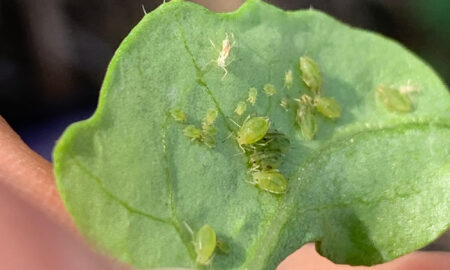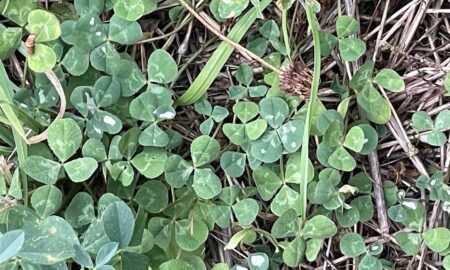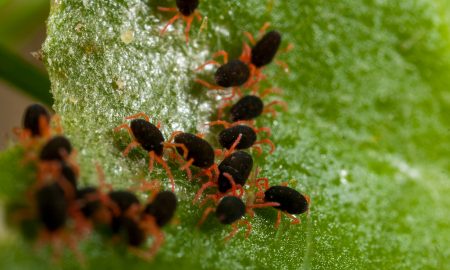A window of opportunity
Pea weevil (Bruchus pisorum) adults hibernate during summer, autumn and winter, emerging in spring to lay their eggs on green field pea pods.
Upon egg-hatch, larvae immediately bore into pods and feed on seeds, where they complete development before adults emerge from infested pods later in spring.
But females don’t immediately lay eggs after emerging from hibernation – first they must feed on pea pollen for ovarian development. This leaves us with the best window for management.
To effectively control pea weevil, adults must be killed before they lay eggs.
Good spray timing is essential in achieving effective pea weevil control.
Start monitoring now!
Growers and advisers should be monitoring for adults in field pea crops now.
The best way to monitor is with a sweep-net at 5-7 day intervals around the edge of pea crops, at about 2 m into the crop.
Concentrate monitoring near trees and other possible hibernation sites (sheds, etc.). Check the net every 25 sweeps.
Based on the SARDI model, it is predicted that adult pea weevils became active on the 29th of August, and based on predicted maximum temperatures for Horsham in coming days, egg-laying will commence around the 12-14th of September, at which time 75% or greater of weevil populations are likely to have emerged and moved into crops.
Spray threshold
The spray threshold for pea weevil is if average numbers exceed 2 or more pea weevils per 25 sweeps.
If the threshold is reached, spray podding pea crops around the 12-14th of September.
For crops at earlier growth stages, where pods won’t form until after the 12-14th of September, spray as the first flowers wither.
A 20-40 m width border spray is the most cost-effective way to control pea weevil.
However, if sweep-net monitoring reveals densities of native budworm (Helicoverpa punctigera) exceeding threshold levels, one whole-crop spray will control both pests. After pea weevil treatment, monitoring and threshold-based treatment for native budworm should continue as normal.
Cultural control for pea weevil
There are cultural control options to consider too.
As well as well-timed spraying, good pea weevil management requires harvesting of pea crops as early as seasonal conditions will permit.
Early harvesting ensures that the pea weevil infestation is still immature, and adults aren’t present to disperse during harvest.
An early harvest will minimise pod and seed shatter, damage from pea weevil feeding, and the risk of grain rejection at delivery. It also provides the long-term benefit of reducing the abundance of pea weevil in the same location next year.
For more information including identification tips, visit the pea weevil PestNote.
Acknowledgements
This article has been adapted from SARDI PestFacts ‘Optimal spray dates for pea weevil’. Thanks to Greg Baker and Rebecca Hamdorf for providing 2020 spray dates.
Cover image: Photo by Andrew Weeks, Cesar Australia





